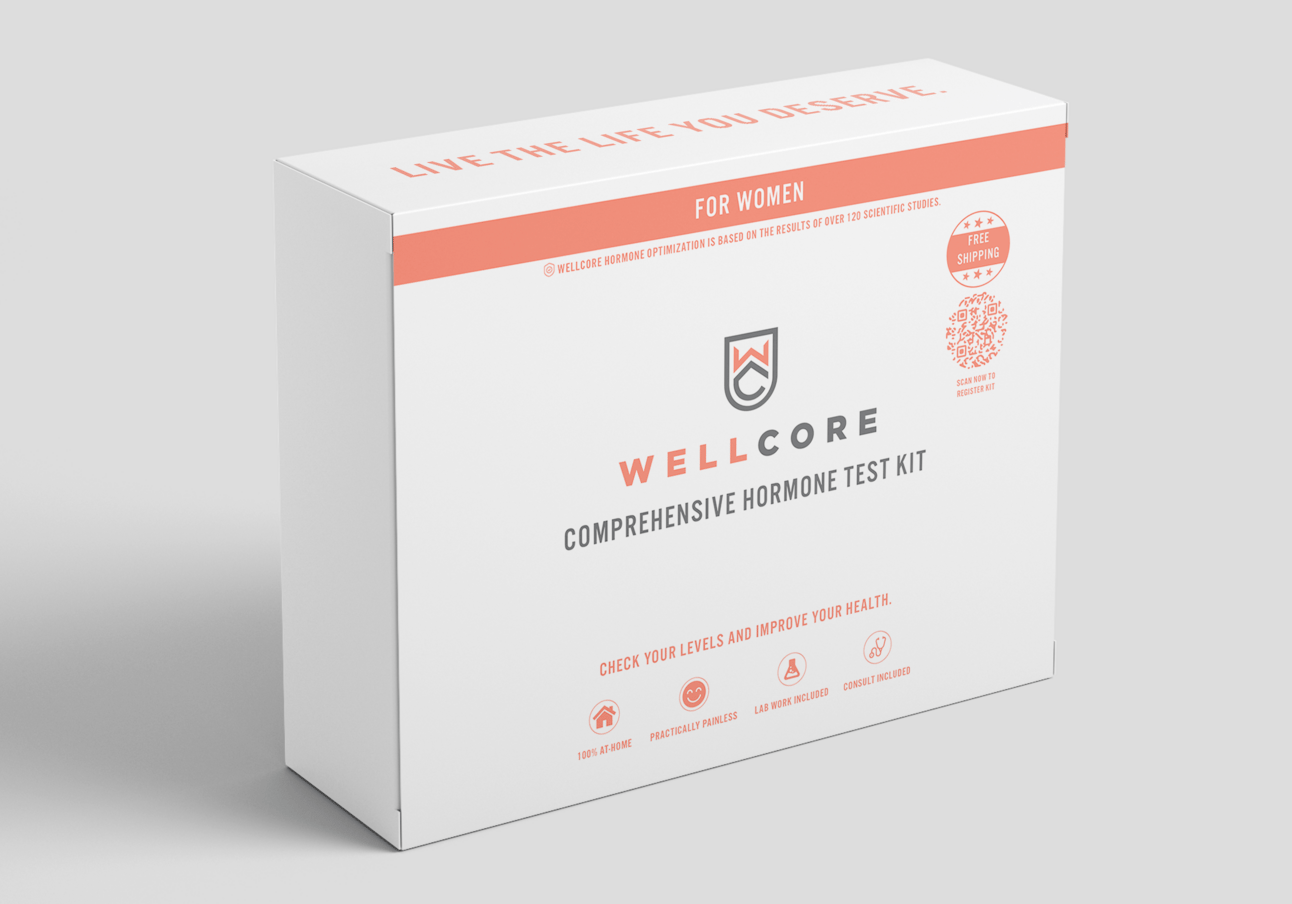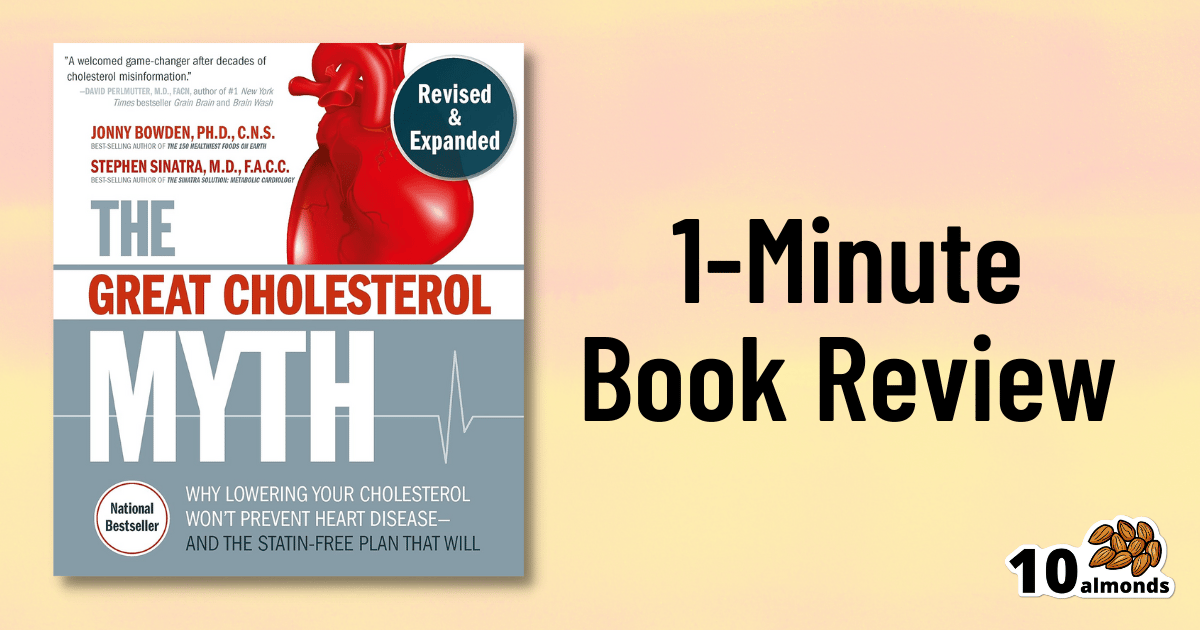
Today’s almonds have been activated by:
Loading Screen Tip: how you look at it is pretty much how you’ll see it!

⏰ IN A RUSH?
Today’s 30-Second Summary
If you don’t have time to read the whole email today, here are some key takeaways:
That big self-perpetuating nuclear explosion in the sky is responsible for many things, good and bad for our health, so be aware of your own risk factors, especially for vitamin D deficiency, and skin cancer.
It’s worth noting also that sun exposure’s risks/benefits are different per what we see, vs what our skin is exposed to.
More is not necessarily better when it comes to sun and vitamin D, and yet there are many more factors to take into account, including things you might not have heard about, like diabetes risk—and more.
The conditions associated with untreated menopause can range from the inconvenient (e.g. mood swings) to the potentially life-threatening (e.g. heart palpitations)
Today’s sponsor, Wellcore, is offering an at-home test kit to help take your menopausal healthcare into your own hands, and find out what is responsible for what—and then enjoy treatment, if appropriate.
Read on to learn about these things and more…

👀 WATCH AND LEARN
Squat Effect No One Is Talking About, Here’s Why! (2:55)
De-clickbaiting the title: actually the video lists many benefits and doesn’t focus on one, nor does it explain why one is otherwise going unmentioned.
However! Squats (of various kinds) do have a lot more benefits than you might think, so this very short video is well worth a watch:
Prefer reading text? Check out: 12 Science-Backed Benefits of Squats You Should Know About

☀️ MAIN FEATURE
The Sun Exposure Dilemma
Yesterday, we asked you about your policy on sun exposure, and got the above-pictured, below-described, set of answers:
A little over a third of respondents chose “I recognize the risks, but I think the benefits outweigh them”
A quarter of respondents chose “I am a creature of the shadows and I avoid the sun at all costs 🧛♀️”
A little over a fifth of respondents chose “I recognize the benefits, but I think the risks outweigh them”
A little under a fifth of respondents chose “I’m a sun-lover! Give me that vitamin D and other benefits! 🌞”
All in all, this is perhaps the most even spread of answers we’ve had for Friday mythbuster polls—though the sample size was smaller than it often is.
Of those who added comments, common themes were to mention your local climate, and the importance of sunscreen and/or taking vitamin D supplements.
One subscriber mentioned having lupus and living in Florida, which is a particularly unfortunate combination:
Another subscriber wrote:
❝Use a very good sunscreen with a high SPF all the time. Reapply after swimming or as needed! I also wear polarized sunglasses anytime I’m outside.❞
…which are important things to note too, and a lot of people forget!
See also: Who Screens The Sunscreens? (on fearing chemical dangers, vs the protection given)
But, onto today’s science for the topic at hand…
We need to get plenty of sun to get plenty of vitamin D: True or False?
True or False, depending on so many factors—to the point that many people get it wildly wrong in either direction.
Whether we are getting enough vitamin D depends on many circumstances, including:
The climate (and depending on latitude, time of year) where we live
Our genes, and especially (but not only) our skintone
The clothes we wear (or don’t)
Our diet (and not just “how much vitamin D do we consume”)
Chronic diseases that affect vitamin D metabolism and/or requirements and/or sensitivity to the sun
For a rundown on these factors and more, check out:
Notably, on the topic of whether you should stay in the sun for longer to get more vitamin D…
❝The body can only produce a certain amount of vitamin D at the time, so staying in the sun any longer than needed (which could be just a few minutes, in a sunny climate) is not going to help increase your vitamin D levels, while it will increase your risk of skin cancer.❞
In contrast, she does also note:
❝During winter, catching enough sun can be difficult, especially if you spend your days confined indoors. Typically, the required exposure increases to two to three hours per week in winter. This is because sunlight exposure can only help produce vitamin D if the UVB rays reach us at the correct angle. So in winter we should regularly spend time outside in the middle of the day to get our dose of vitamin D.❞
We can skip the sun and get our vitamin D from diet/supplements: True or False?
True! However, vitamin D is not the only health benefit of sun exposure.
Not only is sunlight-induced serotonin production important for many things ranging from mood to circadian rhythm (which in turn affects many other aspects of health), but also…
While too much sun can cause skin cancer, too little sun could cause other kinds of cancer:
Additionally, according to new research, the circadian rhythm benefits we mentioned above may also have an impact on type 2 diabetes:
Which way to jump?
A lot of it depends on who you are, ranging from the factors we mentioned earlier, to even such things as “having many moles” or “having blonde hair”.
This latter item, blonde hair, is a dual thing: it’s a matter of genetic factors that align with being prone to being more sensitive to the sun, as well as being a lesser physical barrier to the sun’s rays than dark hair (that can block some UV rays).
So for example, if two people have comparably gray hair now, but one of them used to have dark hair and the other blonde, there will still be a difference in how they suffer damage, or don’t—and yes, even if their skin is visually of the same approximate skintone.
You probably already know for yourself whether you are more likely to burn or tan in the sun, and the former group are less resistant to the sun’s damage… But the latter group are more likely to spend longer in the sun, and accumulate more damage that way.
If you’d like a very comprehensive downloadable, here are the guidelines issued by the UK’s National Institute for Health and Care Excellence:
…and skip to “At risk groups”, if you don’t want to read the whole thing; “Skin type” is also an important subsection.
Writer’s note: genetics are complicated and not everyone will fall neatly into categories, which is why it’s important to know the individual factors.
For example, I am light-skinned with slightly greying dark hair and blue-grey eyes, and/but also have an obscure Sámi gene that means my fair skin makes vitamin D easily, while simultaneously being unusually resistant to burning (I just tan).
And yet! My hobbies include not getting skin cancer, so I tend to still be quite mindful of UV levels in different weathers and times of day, and make choices (schedule, clothing, sunscreen or not) accordingly.
Bottom line:
That big self-perpetuating nuclear explosion in the sky is responsible for many things, good and bad for our health, so be aware of your own risk factors, especially for vitamin D deficiency, and skin cancer.
If you have a predisposition to both, that’s unfortunate, but diet and supplementation at least can help with the vitamin D while getting modest amounts of sun at most.
Remember that you can only make so much vitamin D at once, so sunbathing for health benefits need only take a few minutes
Remember that sunlight is important for our circadian rhythm, which is important for many things.
That’s governed by specific photoreceptor cells, though, so we don’t need our skin to be exposed for that; we just need to be able to see sunlight.
If you’re going to be out in the sun, and not covered up, sunscreen is your friend, and yes, that goes for clear cold days under the winter sun too.
Most phone weather apps these days have a UV index score as part of the data they give. Get used to checking it as often as you’d check for rain.
Stay safe, both ways around!
❤ OUR SPONSORS MAKE THIS PUBLICATION POSSIBLE
Wellcore | Personalized Menopausal Healthcare
People tend to know about hot flashes, but did you know there are more than 30 symptoms associated with menopause? Maybe you knew about weight gain and bone density loss, but night sweats and heart palpitations?
The conditions associated with untreated menopause can range from the inconvenient to the potentially life-threatening.
And yet, many people are left to guess at what symptoms might mean, or worse, simply ignore them.
Wellcore believes in doing better. To make diagnosis and treatment much more accessible to everyone, they offer an at-home testing kit. They’ll then analyze the results, and offer appropriate hormone therapy themselves if you want it (there are many benefits).
Please do visit our sponsors—they help keep 10almonds free

🌎 AROUND THE WEB
What’s happening in the health world…
Could mRNA make us superhuman?
How open-source software could finally get the world’s microscopes speaking the same language
Parkinson's: are our neurons more vulnerable at night?
Long COVID unmasked: patients share varied physical, mental, and social challenges
Cannabis use disorder linked to 60% higher risk of adverse cardiovascular events, Canadian study finds
Experimental nasal spray may offer quick, easy remedy for treating rapid heartbeat
Ginger shows promise as a natural defense against autoimmune diseases
More to come tomorrow!

📖 ONE-MINUTE BOOK REVIEW
The Great Cholesterol Myth, Revised and Expanded: Why Lowering Your Cholesterol Won't Prevent Heart Disease, and the Statin-Free Plan that Will – by Dr. Jonny Bowden and Dr. Stephen Sinatra
The topic of cholesterol, and saturated fat for that matter, is a complex and often controversial one. How does this book treat it?
With strong opinions, is how—but backed by good science. The authors, a nutritionist and a cardiologist, pull no punches about outdated and/or cherry-picked science, and instead make the case for looking at what, statistically speaking, appear to be the real strongest risk factors.
So, are they advocating for Dave Asprey-style butter-guzzling, or "the carnivore diet"? No, no they are not. Those things remain unhealthy, even if they give some short-term gains (of energy levels, weight loss, etc).
They do advocate, however, for enjoying saturated fats in moderation, and instead of certain polyunsaturated seed oils that do far worse. They also advocate strongly for avoiding sugar, stress, and (for different reasons) statins (in most people’s cases).
They also demystify in clear terms, and often with diagrams and infographics, the various kinds of fats and their components, broken down in far more detail than any other pop-science source this reviewer has seen.
Bottom line: if you want to take a scientific approach to heart health, this book can help you to focus on what will actually make the biggest difference.

What did you think of today's newsletter?
May today see you well-prepared for the coming weekend,
The 10almonds Team





